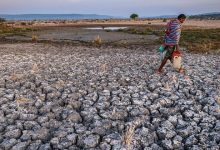Digital tech’s boost for small islands: A growth spurt!
В период с 2014 по 2023 год использование интернета в 57 государствах-островах ежегодно увеличивалось на 8,4 процента, что выше глобального темпа роста в 6,7 процентов.
Проблемы малых островных государств
Каждый из островов может сталкиваться со своими уникальными проблемами, но большинство из них отличаются такими общими особенностями, как далекое местоположение, ограниченная и узкоспециализированная экономика, а также высокие затраты на энергию и инфраструктуру. Кроме того, они крайне уязвимы к последствиям изменения климата и стихийным бедствиям.
В среднем, к 2023 году две трети населения МОСРГ пользовались интернетом, что соответствует мировому показателю. Однако ограничения инфраструктуры и высокие цены препятствуют развитию качественной всеобщей связи.
Читайте также:
Новые данные об использовании интернета в мире: прогресс есть, но различия сохраняются
Например, только 85 процентов населения малых островных развивающихся государств находятся в зоне действия высокоскоростных мобильных сетей, что значительно ниже среднемирового показателя. При этом существует большой разрыв между городскими и сельскими жителями: в сельских районах к сигналу 4G имеет доступ лишь 43 процента островитян.
Кроме того, 18 процентов населения имеют доступ к сетям интернета, но не пользуются ими: это свидетельствует о наличии различных барьеров, в том числе слишком высоких цен и отсутствия подходящего контента или цифровых навыков.
Так, стационарный выход в интернет покупали лишь 10 процентов жителей островных государств, а мобильный – 63 процента. При этом средняя стоимость подключения к самому базовому фиксированному широкополосному доступу в МОСРГ примерно на 46 процентов выше среднемировой цены, а мобильная связь обойдется почти в два раза дороже, чем в иных странах. В то же время 74 процента людей в островных развивающийся странах владеют мобильными телефонами, что близко к среднемировому показателю в 78 процентов.
Будущее на островах
Цифровые технологии и связь могут помочь островам в их уникальных проблемах, например, улучшить меры реагирования на стихийные бедствия и доступность жизненно важных услуг, которые часто бывают затруднены из-за географических особенностей.
Кроме того, электронная коммерция может стать катализатором устойчивого развития в МОСРГ, так как интернет-торговля преодолевает ограничения рынков внутри самих стран.
МСЭ развивает несколько инициатив для этих государств, например, по всеобщему доступ к системам раннего предупреждения, развитию навыков населения и цифровой безопасности.
Simon Blake is an experienced journalist deeply interested in international affairs and global development. Having spent years reporting on humanitarian issues, he offers a unique perspective in his coverage of United Nations news.




Digital technologies are definitely playing a crucial role in the development of small island states. It’s amazing to see how internet usage on these islands has been consistently growing at a rate higher than the global average. However, the unique challenges faced by these islands like remote locations, limited and specialized economies, and high energy costs highlight the need for more investment in infrastructure and connectivity. The disparities between urban and rural areas in access to high-speed mobile networks are concerning, and it’s clear that there are still barriers hindering a more widespread adoption of internet services. Hopefully, with the right strategies in place, we can bridge these gaps and provide better digital inclusion for all islanders.
In the period from 2014 to 2023, internet usage in 57 island nations increased annually by 8.4 percent, surpassing the global growth rate of 6.7 percent. Small island nations face unique challenges, with common characteristics such as remote location, limited and specialized economies, and high costs for energy and infrastructure. Additionally, they are highly vulnerable to the impacts of climate change and natural disasters. By 2023, on average, two-thirds of the population in SIDS were using the internet, matching the global average. However, infrastructure limitations and high prices hinder the development of quality universal connectivity. For example, only 85 percent of the population in small island developing states have access to high-speed mobile networks, significantly lower than the world average. There is a significant gap between urban and rural residents, with only 43 percent of islanders in rural areas having access to 4G signal. Furthermore, 18 percent of the population have access to internet networks but do not use them, indicating various barriers including high prices and lack of suitable content or digital skills. Thus, only 10 percent of residents purchased fixed internet access.
Digital tech’s boost for small islands is crucial for their development. The statistics show a positive trend in internet usage in island nations, but there are still challenges such as limited infrastructure and high costs hindering widespread connectivity. It’s important to bridge the digital divide between urban and rural areas to ensure equal access for all islanders.
As a resident of a small island, I can attest to the challenges we face with limited internet access. Despite progress, disparities in connectivity persist, especially in rural areas. We need more affordable options and digital education to truly benefit from the tech boost.
The digital transformation of small islands is crucial for their development and resilience. It’s heartening to see the growth in internet usage, but disparities in access and affordability still persist, hindering progress. We need concerted efforts to bridge the digital divide and empower all islanders with connectivity.
As an advocate for digital inclusion, I believe that the progress in internet accessibility on small island states is a step in the right direction. However, the disparities between urban and rural areas show that there is still work to be done in bridging the digital divide. It’s crucial to address the barriers that prevent 18% of the population from utilizing the available internet networks, such as high costs and lack of suitable content or digital skills.
How can these small island states overcome the challenges of limited infrastructure and high costs to improve internet access for rural residents?
To enhance internet access for rural residents in small island states, investing in innovative technologies like satellite internet could be a game-changer. Additionally, governments and organizations should focus on subsidizing internet costs and providing digital literacy programs to bridge the digital divide in these regions.
How can small island nations overcome the barriers of high internet prices and limited infrastructure to ensure equal access to digital technologies for all residents?
In the period from 2014 to 2023, the use of the Internet in 57 island states increased annually by 8.4 percent, surpassing the global growth rate of 6.7 percent. Small island states face unique challenges but share common characteristics such as remote locations, limited and specialized economies, and high energy and infrastructure costs. Additionally, they are extremely vulnerable to the impacts of climate change and natural disasters. By 2023, two-thirds of the population in Small Island Developing States were using the internet, aligning with the global average. However, infrastructure constraints and high prices hinder the development of quality universal connectivity. For instance, only 85 percent of the population in small island developing states have access to high-speed mobile networks, significantly below the global average. There is also a significant disparity between urban and rural residents, with only 43 percent of islanders in rural areas having access to 4G signals. Furthermore, 18 percent of the population have access to internet networks but do not utilize them, indicating various barriers such as high costs and lack of suitable content or digital skills. Thus, only 10 percent of island inhabitants purchased a stationary internet connection.